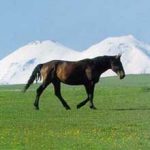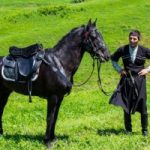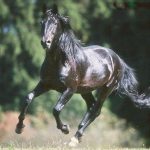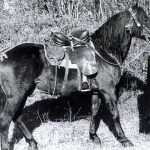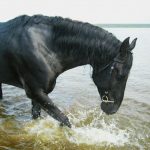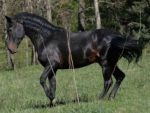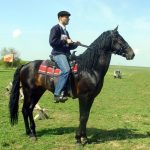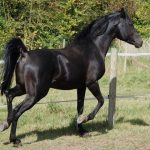Kabarda Horse
The Kabarda Horse is a breed of Russian horses that developed at least 400 years back. Known for their graceful getup and majestic movement, these equines are kept in herds in their homeland for performing various tasks including general riding, endurance riding, and miscellaneous works.
The Kabarda has three subtypes. The first is the ‘basic type’ – the most common variant with a rangy but muscular body. The second one is the ‘oriental’ type, ruled mostly by the Arabian horse characteristics and demeanor. While the third is the biggest and robust ‘massive’ type with a solid osteal anatomy, quite similar to that of the carriage horses.
Kabarda Horse Pictures
- Images of Kabarda Horse
- Kabarda Horse Images
- Kabarda Horse Photos
- Kabarda Horse Pictures
- Kabarda Horse Stallion
- Kabarda Horse
- Kabarda Horses
- Kabardin
Quick Information
| Also Known As | Kabardian, Kabardin, Kabardinskaya |
| Behavioral Characteristics | Calm, noble, lively, willing, adaptable |
| Physical Traits | The head is either clean or at times coarse with long ears, a medium and muscular neck; the back is short but solid with a broad chest, well-set legs, developed joints and hard hooves (with some individuals having their hooves feathered) |
| Coat Colors | Most common colors are black, gray and bay |
| Height/Size | 14.2 – 15.1 hands (adult) |
| Weight | Light; Around 900 pounds |
| Common Uses | Working, General riding, Endurance riding |
| Health Problems | No breed specific diseases |
| Type | Sports Horse, Show Horse, Riding Horse, Working Horse |
| Popular Traits | Multi-talented (versatile), light movement, versatile, easily trainable, resistant to extreme weather conditions |
| Feeding/Diet | General horse diet including hay, grass, grains, etc. |
| Ancestors | Turkoman, Arabian, Karabakh, Cleveland Bay (probably) |
| Developed By | Local nomadic tribesmen |
| Time of Origin | 16th Century |
| Country of Origin | Russia (former USSR/Soviet Union) |
Video: Mares & Foals of the Kabarda Horse Breed
History and Development
The Kabarda horse breed originated in the 16th century in the autonomous Babardino-Balkar Republic and the Stavropol area of the Caucasus (Georgia) in Russia (USSR). Some experts also believe that this breed shares a common origin with the Cleveland Bay horses.
The indigenous breed has a strong connection with the horses of Turkmenistan and was created by the nomadic tribesmen of the region through selective breeding between several Middle Eastern and Asian animals that include the Arabian, the Karabakh, and the Turkoman to enhance the bloodline. As a result, the new horse emerged as a light breed with a very free movement and with extreme durability, especially resistant to the cold climate of the region. They were also quite intelligent, with an outstanding sense of direction.
During the 20th century, these horses were further made to cross with the Arabian Horses, a program that was begun by Count Stroganov of the then famous ‘Stroganov Family’ of the successful Russian merchants, statesmen, and landowners.
Unfortunately, after the Russian Revolution of 1917, the population of the Kabardas declined significantly. By 1920, measures were however taken to re-establish the breed, and this initiative proved to be successful in preventing the line from disappearing altogether.


